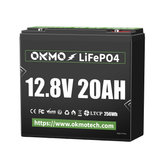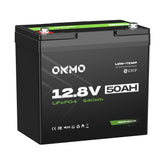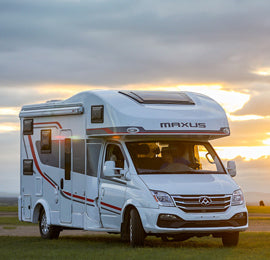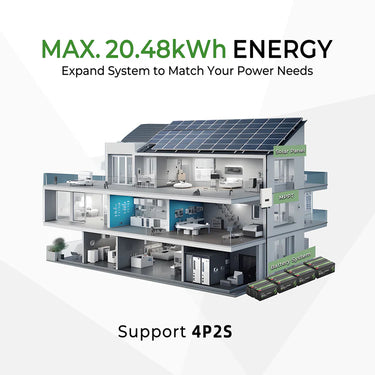Understanding Group 31 Batteries: Power, Performance, and Modern Applications
 When it comes to deep-cycle and starting batteries, Group 31 batteries stand out as one of the most popular and powerful options available on the market today. Known for their high capacity, durability, and versatility, these batteries are widely used in marine, RV, truck, solar, and off-grid systems. In this guide, we’ll explore what Group 31 batteries are, where they’re used, and why many people are now upgrading to LiFePO4 (lithium iron phosphate) versions for better performance.
When it comes to deep-cycle and starting batteries, Group 31 batteries stand out as one of the most popular and powerful options available on the market today. Known for their high capacity, durability, and versatility, these batteries are widely used in marine, RV, truck, solar, and off-grid systems. In this guide, we’ll explore what Group 31 batteries are, where they’re used, and why many people are now upgrading to LiFePO4 (lithium iron phosphate) versions for better performance.
What Is a Group 31 Battery?
The term “Group 31” refers to a standardized battery size and specification defined by the Battery Council International (BCI).
A typical Group 31 battery measures approximately 13 x 6.8 x 9.4 inches (33 x 17.3 x 24 cm) and offers 95–125 amp-hours (Ah) of capacity, depending on the chemistry and brand.
These batteries are larger than Group 24 or Group 27 batteries, making them ideal for high-demand applications that require longer runtime and stronger starting power. They are commonly available in three types of chemistries:
-
Flooded Lead-Acid (FLA) – traditional, affordable, but requires maintenance.
-
AGM (Absorbent Glass Mat) – sealed, spill-proof, and vibration-resistant.
-
LiFePO4 (Lithium Iron Phosphate) – modern technology offering superior performance and longevity.
 Common Applications of Group 31 Batteries
Common Applications of Group 31 Batteries
Because of their high capacity and reliability, Group 31 batteries are used in a wide range of heavy-duty and deep-cycle environments:
-
Marine applications – for trolling motors, navigation systems, and onboard electronics.
-
RVs and campers – to power lighting, refrigerators, and inverters for off-grid travel.
-
Commercial trucks – for starting engines, running APUs, and maintaining onboard systems.
-
Solar energy systems – for storing renewable energy and providing consistent power.
-
Off-grid cabins or backup systems – as part of energy storage banks for emergencies or remote use.
Their ability to deliver high current output and deep discharge cycles makes them a favorite among professionals and outdoor enthusiasts alike.
 Why Upgrade to LiFePO4 Group 31 Batteries
Why Upgrade to LiFePO4 Group 31 Batteries
While traditional lead-acid Group 31 batteries have served for decades, LiFePO4 technology is quickly becoming the top choice for users who want better performance and reliability. Here’s why:
1. Longer Lifespan
A lithium Group 31 battery can last 3,000–5,000 charge cycles, compared to 300–500 cycles for lead-acid batteries. This means up to 10 times longer life.
2. Lightweight Design
LiFePO4 batteries are about 50–60% lighter than AGM or flooded batteries. For boaters and RV users, that translates into higher efficiency and better handling.
3. Higher Usable Capacity
Traditional lead-acid batteries can only be discharged to about 50% without damaging the cells. In contrast, LiFePO4 batteries can safely discharge up to 100% of their rated capacity, offering nearly double the usable energy.
4. Fast Charging and Stable Voltage
Lithium Group 31 batteries charge up to 4 times faster and maintain a consistent voltage output throughout the cycle, ensuring stable performance for sensitive electronics.
5. Zero Maintenance
No water refilling, no corrosion, and no off-gassing — LiFePO4 batteries are completely maintenance-free, making them ideal for long-term installations.
 Choosing the Right Group 31 Battery for Your Needs
Choosing the Right Group 31 Battery for Your Needs
When selecting a Group 31 battery, it’s important to match the battery chemistry and specifications to your application. Consider the following:
-
For marine or trolling motors: Choose a deep-cycle LiFePO4 Group 31 battery with a waterproof case and built-in BMS (Battery Management System).
-
For RV or off-grid solar: Select one with high cycle life and Bluetooth monitoring to track charge levels easily.
-
For commercial trucks or heavy-duty use: Look for high CCA (Cold Cranking Amps) ratings and vibration resistance.
Popular capacities for Group 31 LiFePO4 batteries include 100Ah, 120Ah, and 150Ah, depending on the energy demand.
Environmental and Economic Benefits
Switching to a LiFePO4 Group 31 battery is not only smart for performance but also for the environment. Unlike lead-acid batteries, LiFePO4 cells contain no toxic heavy metals and are fully recyclable. Over time, the reduced maintenance and extended lifespan lead to significant cost savings, making lithium a more economical choice in the long run.
 Final Thoughts
Final Thoughts
Whether you’re powering a trolling motor, running an RV off-grid, or building a solar backup system, the Group 31 battery offers the perfect blend of power and reliability. And with lithium technology like LiFePO4, you can expect longer runtime, faster charging, and worry-free operation for years to come.
For those seeking dependable energy solutions, upgrading to a LiFePO4 Group 31 battery is the smartest move — efficient, lightweight, and built for the future of mobile power.








